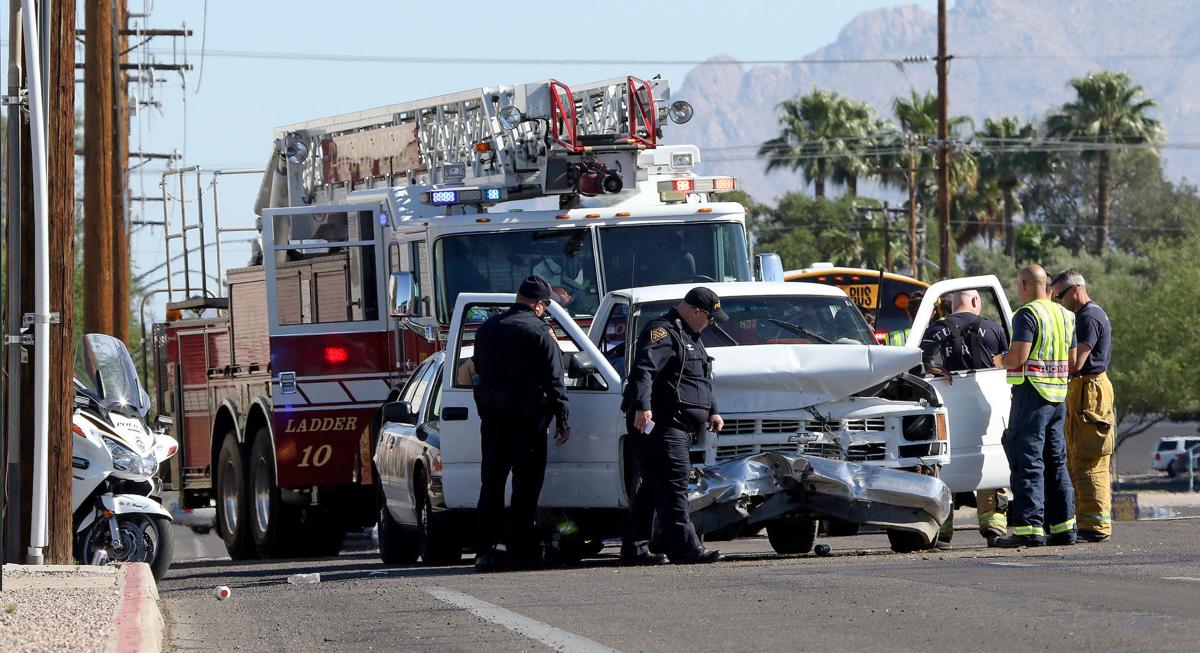What’s the difference between living on the Sahuarita streets of South Mayford and South Avenida Paso Cortito?
About 400 feet and $110 per year in car insurance premiums, at least according to one study of rates paid across the country.
The former street falls into the Green Valley ZIP code of 85614, and the latter into the Sahuarita ZIP code of 85629.
On average, 85629ers — as they almost certainly do not refer to themselves — pay $1,029 per year in car insurance premiums, while their nearby neighbors pay $919, the lowest rate in Pima County.
The poor souls in 85714, a rectangular chunk of ground between Irvington Road and Ajo Way, have the highest average rate in the county: $1,196, or nearly $300 more than the lowest annual bill. The national average for 2016 so far is $1,323, meaning the overall picture locally is not that bleak.
All those figures come from The Zebra, an online insurance rate-comparing website, which compiled data from a number of different companies across the country over five years. The rates were based on a 30-year-old male with a good driving history behind the wheel of a 2012 Honda Accord EX.
A PDF with the rates for all county ZIP codes studied can be found below.
Your humble columnist learned about this geographic variability the hard way when he recently got a letter in the mail from his insurer, informing him that his annual premiums would be going up by more than $160 a year. That jump was the result of moving from Nogales, Arizona, a border city often unfairly maligned for its supposed lawlessness, to just south of downtown Tucson. So it goes.
To get a better sense of what is at play with insurance rates, and what steps drivers can take to cut down on bills, the Road Runner spoke with the Arizona Insurance Institute’s Nicole Farr.
Unsurprisingly, car insurers keep a close eye on certain crime and traffic metrics to gauge how likely claims will be in certain areas. They look at car theft and property-damage rates, traffic levels and accident frequency, among other things.
However, different insurers weight those metrics differently, meaning that moving to an area with more congestion or break-ins may not spell as sharp a jump as you’d think. That’s why Farr recommends that motorists shop around. She also said some companies offer discounts for low-mileage drivers who keep their cars parked and walk or bike to work.
The Road Runner took some of that advice and checked quotes for his neighborhood — as well as his less-than-horrible but not-quite-spotless driving record — and found enormous variability.
The lowest quote for the legal minimum coverage was $39 per month; the highest was an absurd $192. His current insurer, who shall remain unnamed, was in the middle of the pack. If anyone with that unnamed company is reading this, you’re on notice.
DOWN THE ROAD
Several changes are in order for two upcoming projects the Road Runner reported on last week.
Closures at Colossal Cave Road’s railroad crossing near the Old Vail Road will not end Oct. 2, as previously reported, but will extend through Oct. 16 after the arrangement with the Union Pacific Railroad changed.
The extended closure will allow the county and railroad to accomplish most of the work they have planned with a single closure, as opposed to the three closures previously planned.
County transportation department officials said there could still be one more short closure for additional work.
Colossal Cave Road north of the tracks will be accessible from Interstate 10 using the Houghton Road Exit (275).
Also, the work schedule for Rosemont Boulevard previously reported has changed. Work on manhole covers and water-valve covers was set to start last Monday, and will instead start Oct. 10. Milling and road reconstruction will start shortly thereafter.
Residential and business access will be maintained, though delays are to be expected.





